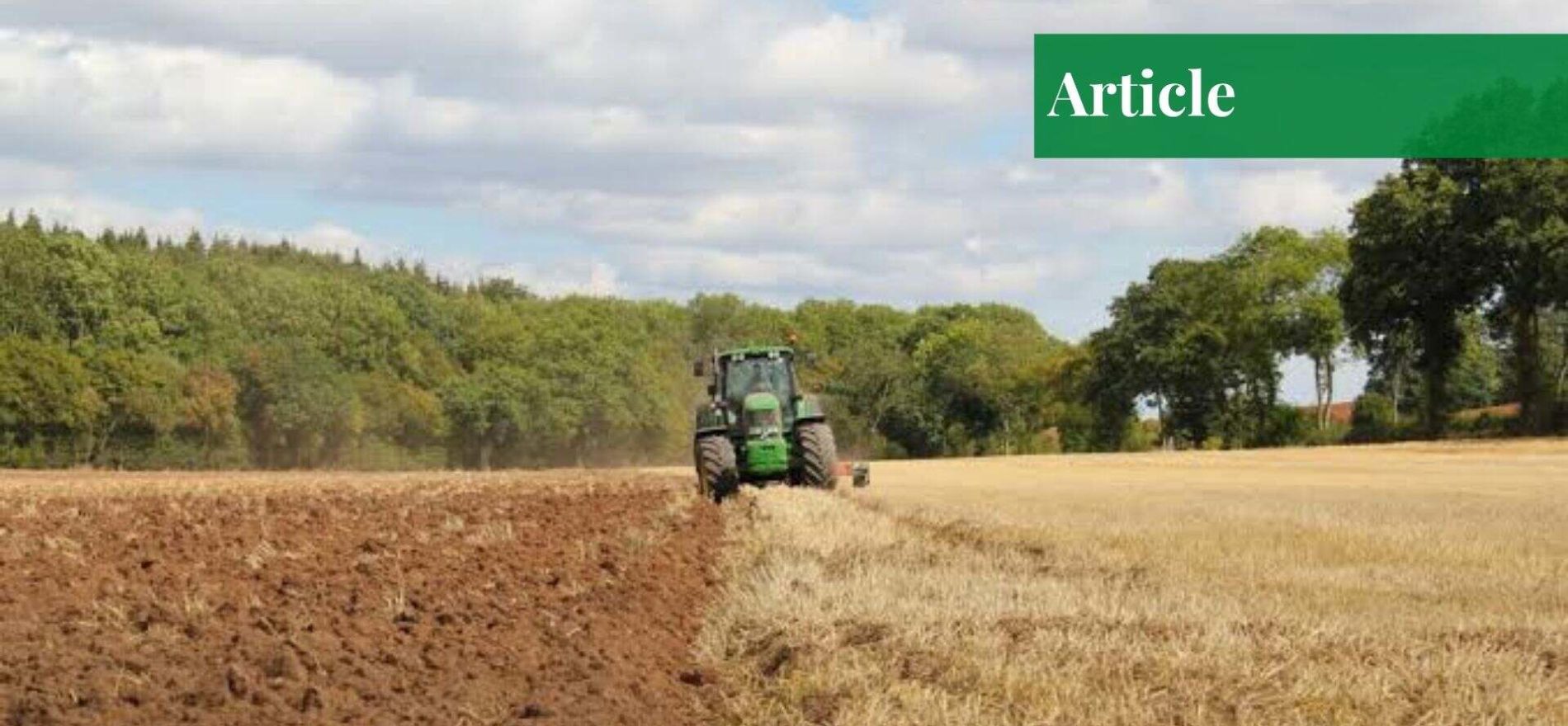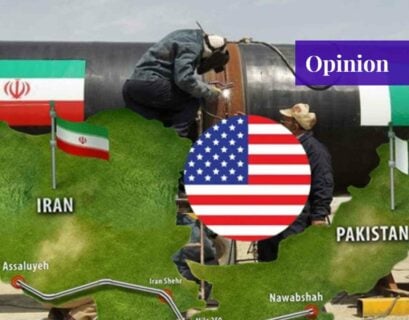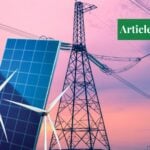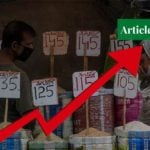Mr. Bilal is an agronomist student at the University of Agriculture, Faisalabad. He has been writing blogs on national and international politics and international relations since 2017.
The Agricultural Revolutions
Before discussing the fourth agricultural revolution, let us first go back to the end of the last Ice age 12,000 years ago, when enhanced competition forced humanity to move from hunting & foraging (gathering wild food) to crop farming and animal domestication, that was when the first agricultural revolution was recorded in human history, also known as the Neolithic revolution.
In mid 17th to late 19th century, the world witnessed a second agricultural revolution in modern Britain with key developments being the adoption of Norfolk four-course crop rotation, the arrival of selective breeding to minimize genetic diversity, an inevitable transformation of pasture lands to agriculture, canal-building, and land reclamation techniques.
The third agricultural revolution, formerly known as the Green Revolution, surfaced from the 1960s onwards with the development of fertilizer responsive and high yielding varieties (HYVs) in cereals putting cereal production at tripled, despite only a 30% increase in cultivated land area.
According to the Food and Agriculture Organization (FAO), the fourth agricultural revolution is a “marriage between data, technological innovation with farming that will further transform the industry and help us to achieve a new level of productivity, quality, diversity, efficiency, and environmental sustainability”.
The concept is basically centered around precision agriculture which entails the utilization of satellite mapping, GIS (Geographical Information System), remote sensing, robots, and drones along with statistical analysis of big data gathered from these applications for smart and optimized decision-making.
The concept emerged in the 1980s in Minnesota, United States where farmers first time practised with soil sensors to measure the land’s organic matter concentration. It has developed enormously with the gradual advances in technology & data analytics, and presently, it has various verticals briefly described below.
Global Positioning System and Geographic Information System
Since its first launch in 1978 in the United States through the USAF (the United States Air Force), GPS has entirely revolutionized the idea of positioning and therefore its role holds key importance in precision agriculture as well. Digitization of maps has made it pretty easy to put the accurately recorded data through GIS software and track the vegetation growth and other crucial parameters at later stages with respect to the land topography and structure.
Besides, there are dozens of other applications of this technology in precision agriculture which include performing yield mapping and charting the soil fertility, weeds location, accurate planting & advanced field layouts, locating the waterlogged areas, and identification of areas suitable for various crops. These advances not only assist the farming decision-makers to calibrate their selection of crops and amounts and location of various inputs applied but also serves the policymakers in adopting targeted approaches for various regions.
Site-Specific Farming and Management Zones
It was first experimented on in 1986, and the term site-specific and precision farming was first introduced by John Schueller, who organized a vital symposium at the 1991 Annual Meeting of the American Society of Agricultural Engineers (ASAE) in Chicago. Site-specific farming intends to pin down the variabilities in various soil properties within the soil and adopt specific management for these areas instead of opting for single management practice for the whole farm.
The site-specific crop management system (SSCM) analyzes and evaluates the within-field variabilities in crop production and incorporates the understanding and errors of digitally mapping the fields. In simple words, management zones are specific areas in a field that are homogenous in their soil fertility status and other crop yield-limiting factors, so they can be treated differently according to their specific input requirements.
Remote Sensing
After the pioneering work done by Robert Colwell at California University in the 1950s, NASA spearheaded the effort of sponsoring a number of universities in states intensively involved in agriculture and the resulting revolution proved it a far more cost-efficient way for gathering information.
It historically revolved around operating sensors and cameras placed on satellites and airborne vehicles (UAVs) to map the yield but soon turned to detecting the nutrient deficiency symptoms and other indicators to measure crop health like water stress, leaf nitrogen content, leaf chlorophyll content, etcetera, using modern hyperspectral sensors.
Another but a bit less modern concept is proximal sensing wherein sensors are placed directly in soil or near the soil surface to monitor these same indices.
Variable Rate Technologies
Variable Rate Technologies (VRT) enable farm owners to apply different farm inputs like fertilizers, irrigation, insecticides, herbicides, seeds, and even additional nutrients like gypsum at varying rates and at specific locations in a field. VRTs can be either based on a map generated in advance on the basis of previously gathered data or these decisions can be formulated in real-time from the information collected through ‘on-the-go sensors’ built specifically for a particular operation.
Sustainable agriculture has become the first and foremost priority of this era that advocates for achieving the present goals of production without damaging the ability of future generations to do the same, which means lowering water & soil pollution and wastage due to farming operations.
On the other hand, the idea that we will have 10 billion humans by 2050 to feed, the demand to increase production is practically impossible without utilizing these chemical control measures. All of which brings us to the VRTs, micro-managing every gram and milliliter of chemical and water applied on the farm, reducing wastage and pollution to the minimum, making it possible to devise an ideal farming land for 30 years ahead.
Automated Tractors and Smart Robotics
In 1941, ingenious Frank W. Andres of Palmyra, Pennsylvania successfully engineered a pilotless tractor that travelled in circles in a field, guided by a barrel of fixed wheel stacked at the field center. The tractor ran for hours by itself and automatically stopped on reaching the center of the field, making another huge leap in the way of farm automation. Developments in GPS and precision agriculture in the 1980s made this technology far more realistic and efficient than before.
Modern driverless tractor technologies are progressing in two categories. Fully autonomous machines like ‘Spirit’ introduced by Autonomous Tractor Corporation in 2012 operate through lasers and radio navigation instead of GPS as “it’s not satisfactory for an autonomous tractor because GPS can fade periodically,” remarked company president Terry Anderson back then.
In recent times, however, the corporation has been focusing more on semi-autonomous farming machinery due to the certain engineering issues encountered by the designers in fully automated vehicles. “Sometimes half is better than the whole,” co-founder Schulz said recently.
Another major company pushing for farm automation is John Deere Corporation, founded by the American blacksmith John Deere who invented the self-scouring plough in 1837. The company introduced its first automated GPS-supported guidance product ITEC pro in 2008, capable of taking precise turns and shifting right gears even in the dust and darkness without getting tired.
Drones
Since the inception of unmanned aerial vehicles (UAVs) in 1849 when Austrians tried to bomb Venice through unmanned balloons, applications of drones had largely been around war zone operations and spying for more than a century and a half, with the first non-military development & first-ever commercial drone permits issued by FAA in 2006 with agriculture as the foremost potential market.
Modern commercial applications have risen to the point where recent research has predicted that by 2025, there will be one million drones operating in US skies per day, while the agricultural drone market will alone account for $32.4 billion as projected in 2016 by PwC. Agricultural applications of drones range from a cheaper alternative to satellite imagery for real-time crop monitoring, evaluation of crop growth stages to 3D land mapping for soil profile analysis as well as the management of nutrients and irrigation.
Precision Agriculture in Pakistan
It is expected to assume that there wouldn’t be many practical applications of the abovementioned modern practices in Pakistan. It’s true to an extent as we haven’t been successful at disseminating even far less contemporary techniques and instruments to our farming community. However, there are several applications of these concepts scattered across the country, hinting at a bright and booming agriculture sector in Pakistan.
One of the best and finest applications can be witnessed at Nishat Agriculture & Dairy Farms, a subsidiary of the Nishat Group of Companies. I was astonished to observe the capital they put in to ensure the efficient and seamless operation of their agriculture farms stretched over 1100 acres on my visit there last week. The whole lot is dedicated to making haylage and silage for their dairy farm which houses 7000 cattle with over 100,000 lakh liter daily production of milk.
There was a combine harvester from German manufacturer Claas which was said to cut the whole acre of Barseem in just 5.5 minutes. Seeder drill from an Italian agri-tech conglomerate Gaspardo was operated to sow 100-200 acres in a single day. All of this advanced machinery is imported from either American, German, or Italian tech giants with even the operators being foreign in some cases. It’s not just the machines’ capacity to outperform humans and other conventional tools, they are also automated in their utilization.
These machines immediately stop when struck by a big stone or any other hurdle in the field or in the case of an internal fault, they show the details of the fault on the screen of the operator. For irrigation purposes, these farms have a central pivot sprinkler irrigation system, again built by an American manufacturer Valley Irrigation, which is a leader in precision irrigation systems. It can irrigate over 120 acres in just ten hours with a wholly automated mechanism controlled through a single interface.
It runs for a programmed time and shuts automatically even if no supervisor is present. They even have their own weather station, apart from coordinating their operations with the Pakistan Meteorological Department. These are just the trivial details of the perfection Nishat and other farms like it have achieved following the precision practices which have become a norm of agribusiness internationally.
Other examples in terms of precision agriculture are Ali Tareen Farms and JK Dairies, both known for monitoring thousands of cattle through Nedap Livestock Management, a globally famed animal monitoring platform that keeps track of real-time health parameters of all the animals and immediately alerts the supervisors through a dedicated application if any cow needs attention. It’s humanly impractical to visually monitor thousands of cows daily without compromising the efficiency of the results.
So modern solutions like these come in handy to operate animal farms on a large scale. As you can notice, you can only come across these examples at the farms owned by large conglomerates where initial capital and land resources were no issue, but small landholdings have been one of the major hurdles in any agricultural development when it comes to Pakistan but the tide is turning gradually.
Many other new farms have been following the course set by Nishat and JK Dairies and the government is also mending its policies in this regard. The Cabinet has just authorized the lease of state-owned land for corporate farming under China Pakistan Economic Corridor (CPEC). The issue had been pending since the previous government but with the project’s Phase -II unraveling, Pak-China cooperation in the agricultural sector is also destined to increase.
Pakistan’s National Food Security Policy published in 2018 proposed to promote precision agriculture practices among farmers to ensure both profitability and sustainability. The Punjab Government has been offering up to 60% subsidy over the installation of drip and center pivot irrigation systems which have contributed to increasing tunnel farming and large scale farming of other crops.
Last year, the government approved the establishment of the Civil Drone Authority to formulate drone laws and other necessary policies towards agricultural drones. Startups like Alpha Robotics can also be seen successfully establishing the use of drones in farming operations. The Ministry of National Food Security and Research (MNFSR) also initiated a ‘Zero Hunger’ Programme last year, aimed at ensuring stability in food prices through promoting modern climate-smart agriculture.
Although these and other initiatives are gradually enhancing the contribution of modern technologies in increasing the productivity, profitability, and efficiency of Pakistan’s agricultural sector, these developments are still nothing compared to the developed countries Pakistan is competing with in export markets of both raw and processed food commodities.
While the government needs to bolster the institutional backing to these initiatives in every possible way, real and sustainable change is not possible unless the private sector, especially the food and textile conglomerates, join in the dissemination of these technologies on a large scale, obviously without jeopardizing the interests of farmers.
If you want to submit your articles, research papers, and book reviews, please check the Submissions page.
The views and opinions expressed in this article/paper are the author’s own and do not necessarily reflect the editorial position of Paradigm Shift.


















